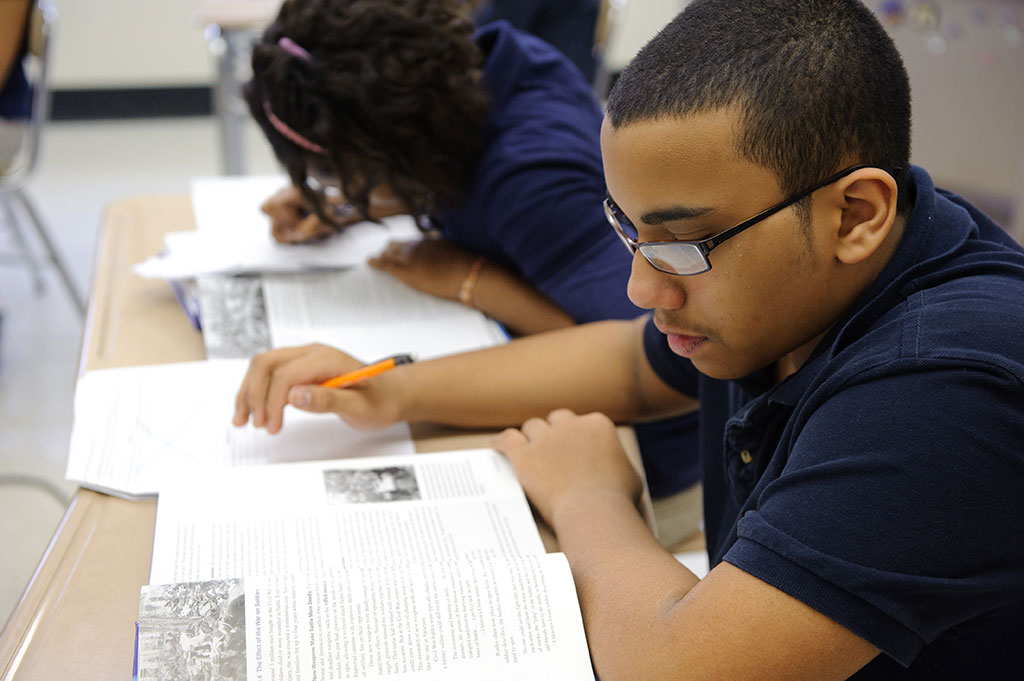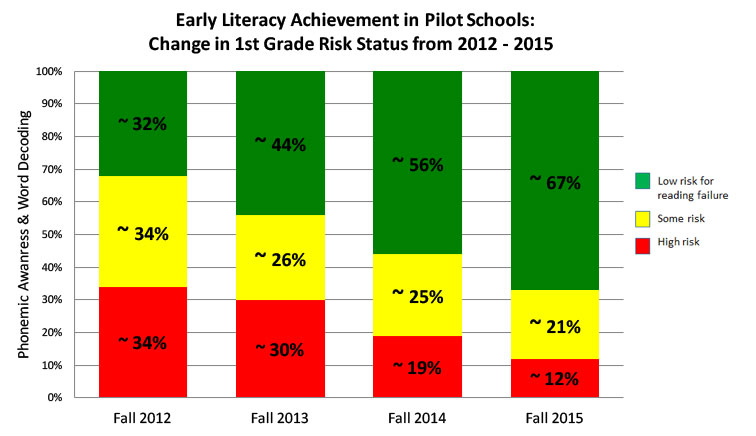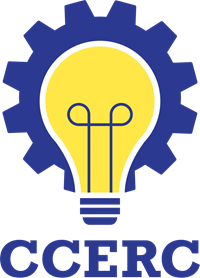Given the wide scope of stakeholders for whom education remains a chief concern, an interdisciplinary approach to addressing education issues is undeniably crucial. The Neag School’s Center for Education Policy Analysis, Research, and Evaluation (CEPARE) brings together scholars and practitioners from such diverse areas of expertise as education reform, literacy education, and education law to work collaboratively across disciplines in producing high-quality research, evaluation, and policy analysis related to all facets of education. CEPARE’s emphasis on collaboration is what can turn the most challenging and enduring educational issues — from the achievement gap to educator effectiveness to school improvement — into opportunities to inform, shape more effective strategies, and shift conversations in a positive direction, all with a particular focus on the impact of policies on social justice and educational equity.
CEPARE is a member of the Education Policy Alliance. The Education Policy Alliance is a nationwide network of university-based research centers and organizations. Alliance members provide high-quality research on the nation’s most important education policy and practice issues.
Center for Connecticut Education Research Collaboration (CCERC)
The Connecticut State Department of Education (CSDE) is using federal coronavirus relief funds to establish the CCERC -- a ground-breaking, first-of-its-kind research collaborative of public and private universities across Connecticut. This collaborative is designed to:
- Address pressing issues in the state's public schools through high quality evaluation and research
- Leverage the expertise of researchers from different institutions possessing varied methodological expertise and content knowledge
Additional Reading on CCERC:
SETER Alliance

Today, the Connecticut State Department of Education (CSDE) is making targeted investments in what are known as the Alliance School Districts, which represent the 33 lowest-performing school districts in Connecticut and 42% of the state’s school population — a significant proportion of Connecticut’s future workforce. Collectively, these school districts serve more than 200,000 students and upwards of 400 schools in urban, suburban, and rural contexts.
Driving economic development in Connecticut means keeping this 42% of the state’s most vulnerable students top of mind. The outcomes for these students will have significant implications for the educational, community, and economic development of the state.
Neag School faculty and graduate students are actively working with school district leaders (e.g., district supervisors for mathematics, special education, etc.) to exchange information, identify needs and goals, and conduct and disseminate relevant research — all with the aim of supporting Alliance School Districts as they strive to transform practices and, ultimately, improve the educational environment, experience, and attainment for all students.
Though the Alliance for Socially and Educationally Transformative Engagement and Research (SETER Alliance), the Neag School, CSDE, and the state’s Alliance School Districts will seek to transform the educational experiences and outcomes of thousands of traditionally underserved students and families across the state through the following efforts:
- providing schools and districts with opportunities to engage in evidence-based and outcome-oriented activities
- engaging researchers and district-level leaders in socially and educationally transformative engagement and research activities to address access, equity, and educational attainment issues in some of Connecticut’s more challenging educational contexts
- leveraging the experience and expertise of practitioners in the field as well as faculty scholars to expand our collective knowledge base
- increasing the opportunities available to Alliance School Districts through extramural funding secured from foundations and other funding agencies
- allowing stakeholders at the Neag School, CSDE, and Alliance School Districts to learn from one another and collaborate in addressing common issues facing Connecticut’s schools
- putting into practice the Neag School’s mission to improve educational and social systems to be more effective, equitable and just for all.
Ultimately, sharing and disseminating research findings and other relevant evidence can inform decision making; improve educational opportunities for students; and engage school districts in learning about what is working, for whom it is working, and under what circumstances it is working.
Additional Reading on Work With Alliance Districts:
National Center for Research on Gifted Education
Policymakers, educators, and parents want assurance that all of the nation’s gifted and talented students receive instruction that is sufficiently challenging and that will allow these students to reach their full potential.

Unfortunately, two crucial issues continue to plague gifted education: (1) Underrepresented populations continue to be under identified as gifted and underserved by programs for the gifted. (2) Research on best-practice interventions for gifted students and outcomes of gifted programs and services is sparse. Center researchers will complete three secondary studies and one randomized control trial (RCT) to provide stakeholders with tools to better recognize and harness untapped talent and increase our understanding of the outcomes of gifted services. These four studies, recently funded by a five-year, $5 million grant from the U.S. Department of Education’s Institute of Education Sciences, are addressing the following questions:
- What are the academic outcomes of gifted education? Do they extend beyond academic achievement?
- What impact do teachers have on gifted students' success?
- Can universal screening for acceleration be effectively implemented? Will universal screening, in combination with teacher training, increase the use of subject and grade acceleration?
- Can identification systems be simplified while expanding participation opportunities for underserved populations? What role does teacher nomination play in identification?
Read more about this grant on UConn Today.
The National Center for Research on Gifted Education (NCRGE) is a collaborative effort of researchers from six universities: the University of Connecticut, Michigan State University, University of California at Berkley, the University of California at Santa Cruz, the University of Iowa, and the University of Wisconsin at Whitewater. Research team members include CEPARE affiliated researchers Betsy McCoach and Christopher Rhoads. It is part of the Jacob K. Javits Gifted and Talented Students Education Program, which funds evidence-based research, demonstration projects, and innovative strategies to enhance the ability of elementary schools and secondary schools nationwide to identify gifted and talented students and meet their special educational needs. The major emphasis of the program is on serving students traditionally underrepresented in gifted and talented programs.
To learn more, visit the NCRGE’s website.
Additional Reading on NCRGE Research Findings:
Connecticut’s Partnership for Literacy Success
For Professor Michael Coyne in the Neag School, sharing data about research-proven practices for teaching and assessing reading skills led him to secure several significant rounds of funding for work focused on improving literacy. Having engaged in a major study about early reading interventions and publishing research findings on vocabulary instruction for young children, Coyne received federal grants to conduct additional research into how schools could bolster reading skills for kindergartners.
From there, he went on to acquire additional funding for a pilot reading initiative from the Connecticut General Assembly. This pilot program — which provided not only tools and strategies proven to be effective in improving reading skills, but also ongoing coaching and professional development to educators and administrators across Connecticut — revealed dramatic improvements in early childhood literacy within just four years. As a result, the program has been adopted by dozens of schools statewide and remains a critical model in addressing Connecticut’s reading achievement gap.

The goal of Connecticut’s Partnership for Literacy Success (formerly known as the Connecticut K-3 Literacy Initiative, or CK3LI) is to directly address the reading opportunity gap in Connecticut and support literacy success for all students. It is based on a multi-tiered systems of support (MTSS) framework and is anchored to evidence-based literacy practices.
The partnership represents a unique eight-year collaboration between the Connecticut State Department of Education, the Black and Puerto Rican Caucus of the Connecticut General Assembly, the Neag School of Education at the University of Connecticut, the Connecticut Commission on Women, Children and Seniors, HILL for Literacy, and Literacy How.
Funded by the Connecticut State Department of Education, the Partnership’s team of expert reading coaches, trainers, and evaluators work directly with schools to implement Connecticut’s Literacy Model (CTLM) and actualize the State Board of Education’s goals, priorities, and vision for improving student reading achievement in our state.
In 2016, within four years of implementing the pilot, Coyne and his research partners revealed that pilot schools had more than doubled the number of students meeting grade literacy level goals, while more than halving the number of students at significant risk for reading failure. In March 2017, additional positive results were reported at a forum in Hartford, Connecticut.
To learn more about the Connecticut Partnership for Literacy Success’ history, model, participating schools, and more, visit its dedicated website.
